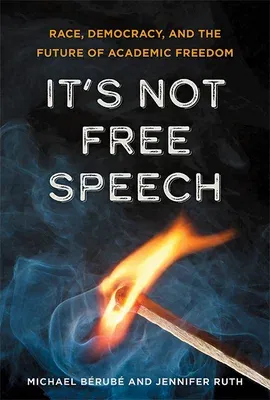How far does the idea of academic freedom extend to professors in an
era of racial reckoning?
The protests of summer 2020, which were ignited by the murder of George
Floyd, led to long-overdue reassessments of the legacy of racism and
white supremacy in both American academe and cultural life more
generally. But while universities have been willing to rename some
buildings and schools or grapple with their role in the slave trade, no
one has yet asked the most uncomfortable question: Does academic freedom
extend to racist professors?
It's Not Free Speech considers the ideal of academic freedom in the
wake of the activism inspired by outrageous police brutality, white
supremacy, and the #MeToo movement. Arguing that academic freedom must
be rigorously distinguished from freedom of speech, Michael Bérubé and
Jennifer Ruth take aim at explicit defenses of colonialism and theories
of white supremacy--theories that have no intellectual legitimacy
whatsoever. Approaching this question from two angles--one, the question
of when a professor's intramural or extramural speech calls into
question his or her fitness to serve, and two, the question of how to
manage the simmering tension between the academic freedom of faculty and
the antidiscrimination initiatives of campus offices of diversity,
equity, and inclusion--they argue that the democracy-destroying
potential of social media makes it very difficult to uphold the
traditional liberal view that the best remedy for hate speech is more
speech.
In recent years, those with traditional liberal ideals have had very
limited effectiveness in responding to the resurgence of white
supremacism in American life. It is time, Bérubé and Ruth write, to ask
whether that resurgence requires us to rethink the parameters and
practices of academic freedom. Touching as well on contingent faculty,
whose speech is often inadequately protected, It's Not Free Speech
insists that we reimagine shared governance to augment both academic
freedom and antidiscrimination initiatives on campuses. Faculty across
the nation can develop protocols that account for both the new
realities--from the rise of social media to the decline of tenure--and
the old realities of long-standing inequities and abuses that the
classic liberal conception of academic freedom did nothing to address.
This book will resonate for anyone who has followed debates over
#MeToo, Black Lives Matter, Critical Race Theory, and "cancel culture";
more specifically, it should have a major impact on many facets of
academic life, from the classroom to faculty senates to the office of
the general counsel.

